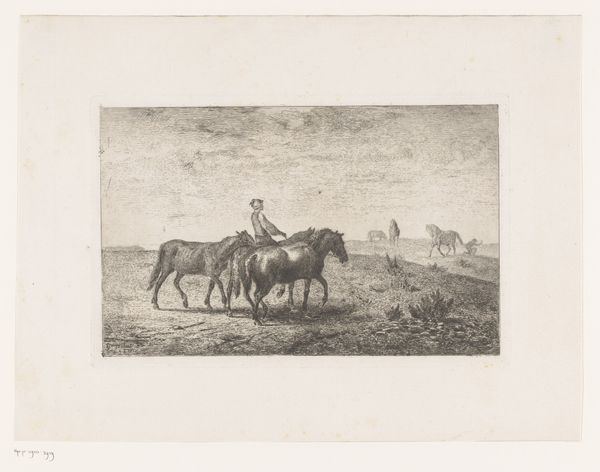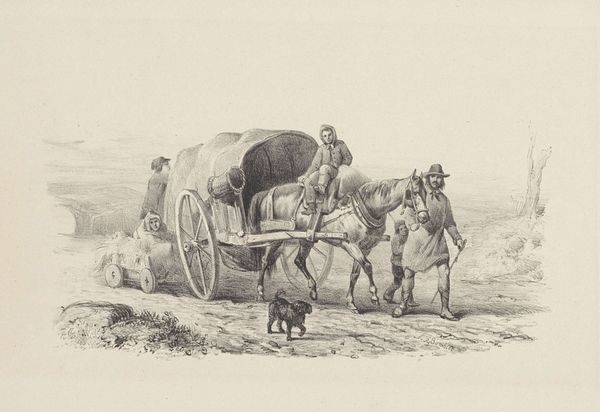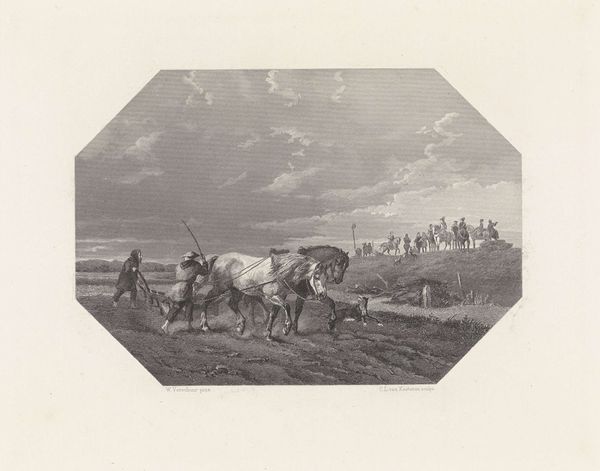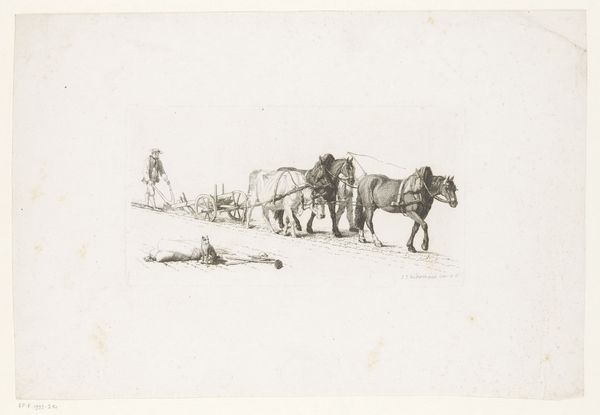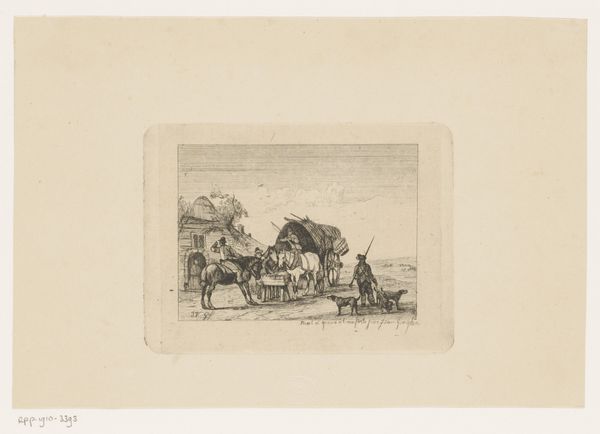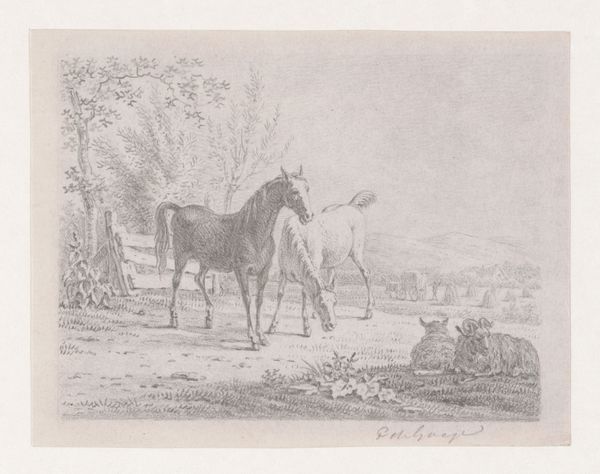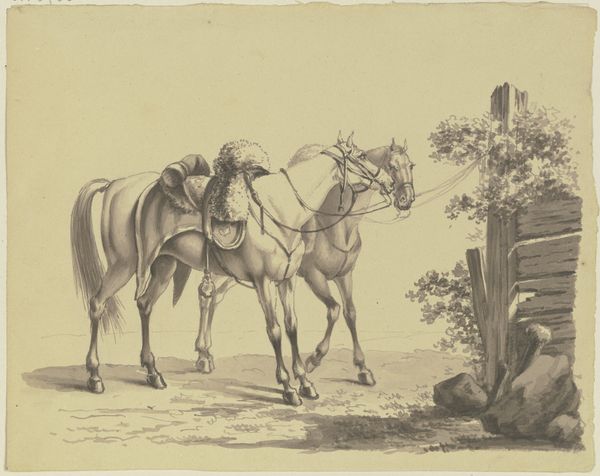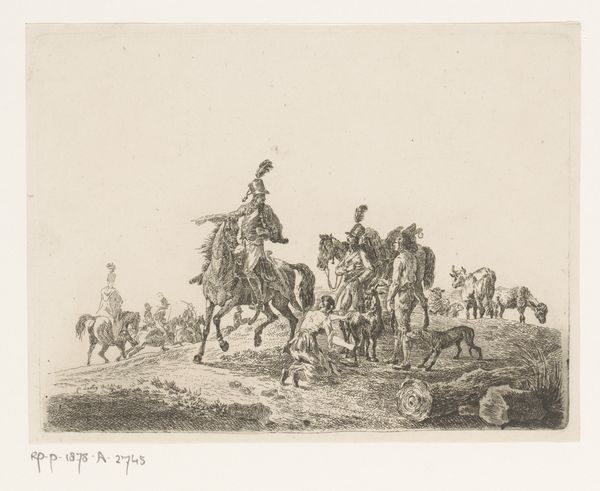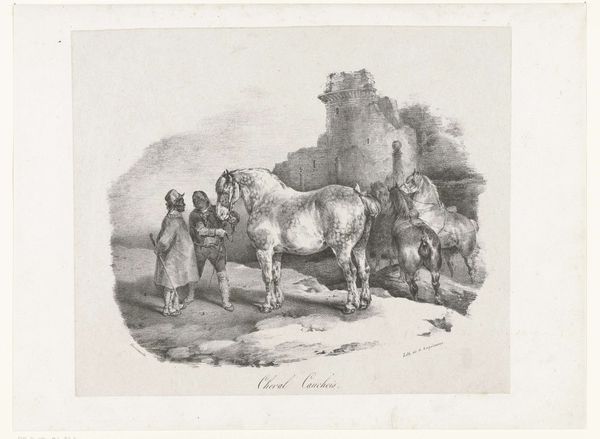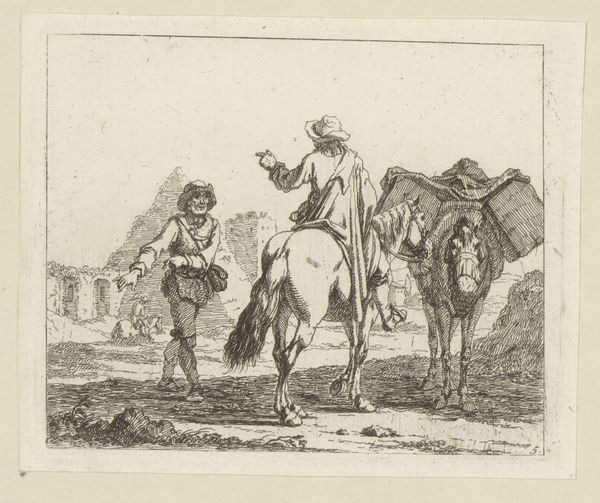
drawing, print, etching, pencil
#
drawing
# print
#
etching
#
pencil sketch
#
landscape
#
pencil
#
genre-painting
#
realism
Dimensions: height 205 mm, width 280 mm
Copyright: Rijks Museum: Open Domain
Pierre Louis Dubourcq made this print of horses for a plough in the 19th century using a technique called etching, an indirect process of printmaking that relies on the corrosive properties of acid. The image is built up from tiny, closely-worked lines. The crispness of these lines is important to appreciate, because the etching process involves drawing into a wax ground laid on a metal plate. When the plate is immersed in acid, the drawn lines are exposed, creating incised marks. It’s a relatively indirect way of making an image, and one that allows for an incredible fineness of detail. Consider the social context of this image: it represents a moment when agriculture was still heavily reliant on animal power, just before full mechanization would change the landscape of labor forever. Look closely, and you can see the immense amount of work and skill that would have gone into producing even the simplest of crops. Appreciating the techniques behind this print, the handcraft involved, can help us to better value the labor represented.
Comments
No comments
Be the first to comment and join the conversation on the ultimate creative platform.
